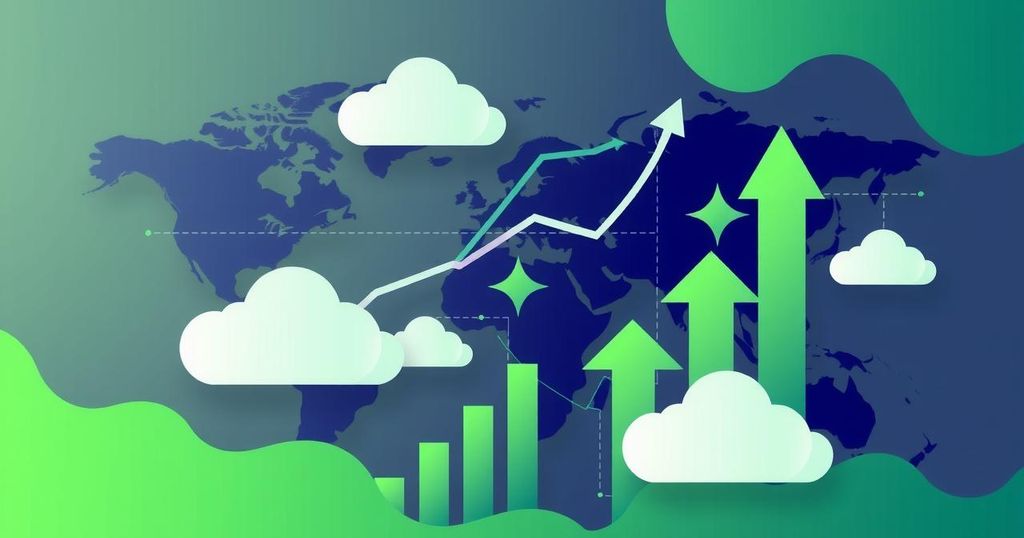Political Cycles and Q3 2025 Market Opportunities: Riding Election-Driven Policy Shifts

- The third quarter of 2025 holds potential for market shifts due to political elections.
- Germany’s elections will shape the future of the Clean Industrial Deal.
- Southeast Asia is facing trade tensions impacting the Philippines’ economy.
- Mexico’s election may recalibrate legal frameworks, notably affecting construction.
- Geopolitical tensions in the Middle East and Russia’s energy policies pose risks.
Understanding the Importance of Political Cycles
The third quarter of 2025 is shaping up to be incredibly significant for global markets, as major elections are set to take place across pivotal geopolitical regions. This upcoming wave of elections is expected to significantly impact policy frameworks and the valuation of various sectors. Investors are urged to adopt a calculated approach, focusing on sectors that could either benefit from or face upheaval due to these political shifts.
Analyzing Germany’s Clean Industrial Deal Impact
In Germany, the elections on February 23, 2025, stand as a crucial juncture for the country’s agenda on climate policy, particularly the Clean Industrial Deal which is a central part of the European Union’s decarbonization efforts. The emergence of a coalition that leans towards aggressive climate action could hasten investments in renewable energies and electric vehicle manufacturing, while a more conservative approach may witness restrained spending on climate initiatives. For example, Siemens Games, a leading player in renewable energy, is one of the companies to watch as the outcome of these elections could play a massive role in its growth and valuation. If a pro-climate coalition takes helm, it may drive up the company’s stock; conversely, a conservative government may lead to unfavorable volatility, taking away from its growth prospects.
Political Stability and Trade Dynamics in Southeast Asia
Turning to Southeast Asia, the results of the Philippines’ legislative elections on May 12, 2025, could provide a litmus test for the government’s strategy in the face of escalating trade tensions, particularly between the U.S. and China. If a pro-U.S. administration emerges, we could see a fast-tracked approach to trade deals that would significantly bolster sectors like technology and logistics. Meanwhile, the political landscape in Indonesia will be pivotal for commodity prices, especially as it is a key producer of nickel, essential for electric vehicle batteries. How the Philippine Stock Exchange Index (PSEI) performs relative to global markets will largely depend on Manila’s ability to resolve existing trade disputes and attract foreign investment amid these key elections.
Legal Reforms in Mexico and Brazil’s Commodity Landscape
Over in Latin America, the extraordinary election of the Judiciary in Mexico on June 1, 2025, may fundamentally reshape the country’s legal landscape, influencing essential sectors like energy, mining, and infrastructure. A more independent judiciary could pave the way for expedited permitting processes for significant projects, which would benefit construction and natural resource firms. In Brazil, the upcoming presidential race in 2026 is on the horizon, but current government policies regarding commodities will strongly affect sentiment during Q3. Companies such as Vale, which is a major iron ore player, could see valuations rise or fall based on the stability of commodities and external demand, notably from China. Any pro-growth policies resulting from these elections could significantly enhance market confidence and investment.
Assessing Cross-Regional Risks and Investment Strategies
Amid all this, geopolitical strains remain a focal point that could add layers of complexity to these developments. Ongoing conflicts in the Middle East and Russia’s energy policies are potential disruptors for global markets. Fluctuations in Brent crude prices could have far-reaching consequences for sectors like airlines and utilities, which are already navigating tumultuous waters. Furthermore, the looming U.S. debt ceiling deadline on August 7, 2025, poses a significant risk that could strain global liquidity. Investors should brace for more volatility; a rise in Brent prices or widening bond spreads could lead investors towards safer assets, such as gold or utilities in order to shield themselves.
Key Themes and Strategic Insights for Investors
Navigating the complex interplay of these political cycles during Q3 2025 requires investors to remain keenly aware of the potential outcomes. Major themes will revolve around Germany’s climate agenda, Southeast Asia’s resilience amid trade challenges, and the legal frameworks impacting Latin America. While there are indeed prospects in area such as renewable energy, technology, and infrastructure, investors must remain cautious due to geopolitical risks and the overarching economic climate. The ability to be agile and to harness insights specific to these sectors will be essential for capitalizing on the opportunities that arise in this fluid environment. Investors should overweight sectors like renewable energy, Philippine tech stocks, and Mexico’s construction sector, while being cautious about sectors at risk from trade disputes and commodity price volatility.
Final Investment Recommendations for Q3 2025
In light of these factors, the overall investment recommendation would be to prioritize sectors that stand to gain from favorable political outcomes while minimizing exposure to those vulnerable to potential downturns triggered by trade issues or commodity price shifts. Adding defensive assets, such as inflation-linked bonds and gold ETFs, could provide a hedge against unforeseen volatility, thereby maintaining a diversified portfolio. As political cycles continue to bring about impactful economic changes, an informed and responsive investment strategy will likely yield the best results during this busily evolving period.
As we approach the pivotal quarter of Q3 2025, the convergence of major elections and policy shifts is set to create a complex landscape for investors. Key areas to monitor include Germany’s climate strategy, trade dynamics in Southeast Asia, and legal reforms in Latin America. Diversification across sectors poised for growth and those that offer protection against geopolitical risks will be crucial for navigating this challenging environment.





